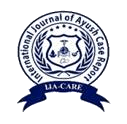A Multidisciplinary Approach in Successful Pregnancy in patient having Bicornuate Uterus with Uterine fibroid: A Single Case Report
Abstract
Uterine malformation refers to abnormal fusion of the mesonephric duct(Mullerian duct) during fetal life, resulting in numerous congenital uterine malformations like septate uterus, unicornuate uterus, and bicornuate uterus. Fertility and the evolution of pregnancy depend on the type of uterine anomaly.Many of them are asymptomatic, but it is important to consider this diagnosis in recurrent miscarriages, preterm labor, malpresentation, and Intrauterine growth restriction. The Incidence of uterine malformation is estimated to be 3-5% and the bicornuate uterus is estimated to be 0.1%-0.6%. The bicornuate uterus is a congenital abnormality where the uterus has two separate cavities or horns instead of one larger cavity.According to the American Society of Reproductive Medicine's classification of Mullerian duct anomalies, a bicornuate uterus is an extremely uncommon congenital anomaly of the uterus that belongs to class 4. It is linked to several obstetric complications, including growth restrictions, recurrent abortions, and malpresentation. However, careful prenatal monitoring is necessary for normal pregnancy in a bicornuate uterus, and surgical unification may be required depending on the individual.It can increase the risk of certain pregnancy complications such as miscarriage,preterm birth& breech presentation.A 27-year-old Primigravida, at 14 wk+5 days of gestationcame to the OPD with the complaint of pain in the lower abdomen from 2 months.However, she was diagnosed with a bicornuate uterus with uterine fibroid (about 3.8×3.0×3.6cm) in the presence of pregnancy, based on ultrasound findings.

